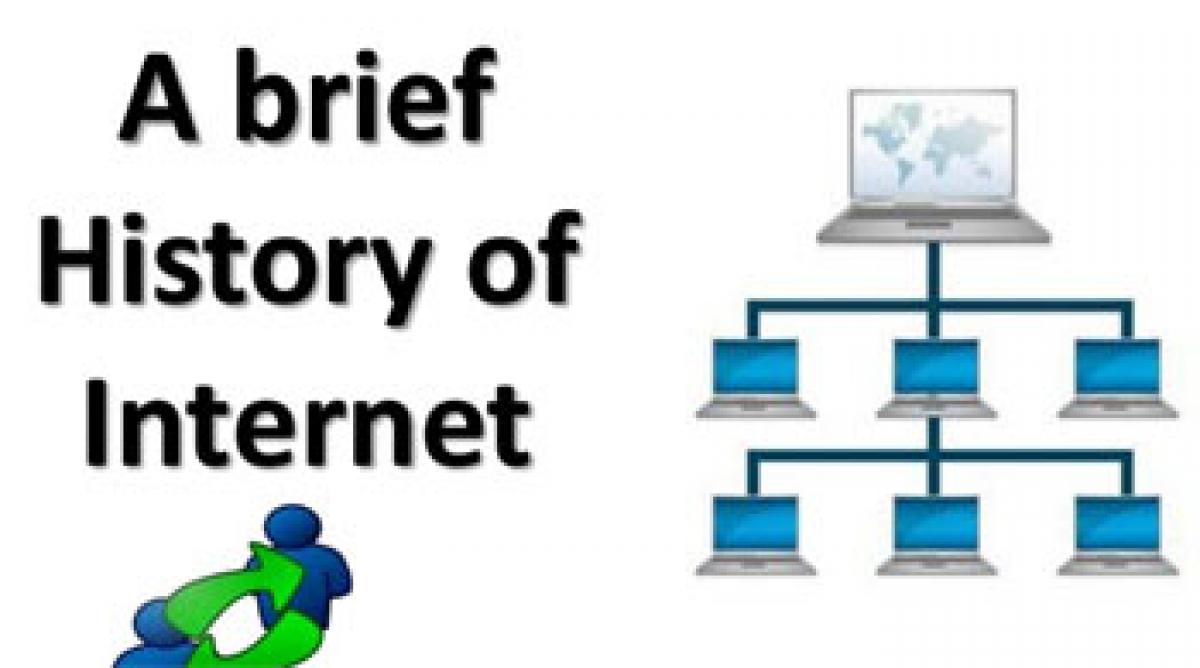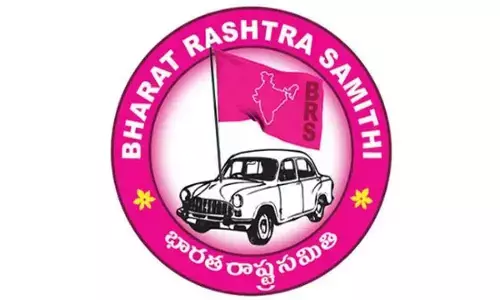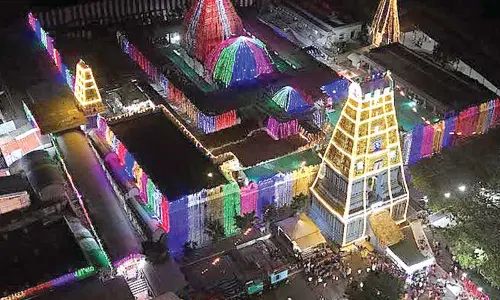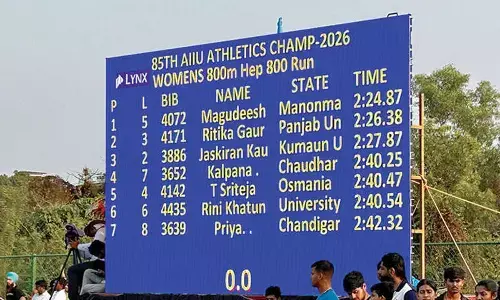A brief history of the Internet

The US establishes the Defense Advanced Research Projects Agency (Darpa) in response to the USSRs launch of Sputnik during the Cold War.
 Here’s a timeline of how the Internet came to be, along with some landmark events that redefined it:
Here’s a timeline of how the Internet came to be, along with some landmark events that redefined it:
1958
The US establishes the Defense Advanced Research Projects Agency (Darpa) in response to the USSR’s launch of Sputnik during the Cold War.
1961
Leonard Kleinrock at the Massachusetts Institute of Technology (MIT) publishes the first paper on packet-switching theory—a theory that comes into use later for sending data through the Web.
1962
J.C.R. Licklider of the MIT proposes the concept of a “Galactic Network”, similar in concept to today’s Internet. Licklider is chosen to head Darpa’s research efforts.
1965
Computers TX-2 in MIT and Q-32 in California are connected via a telephone network. With the first wide-area computer network comes the realization that time-sharing works well, although not over telephone networks (circuit switching), but through packet switching.
1967
Lawrence G. Roberts of MIT goes to Darpa, comes up with his plan for Arpanet and publishes it. MIT (1961-1967), RAND Corp. (1962-1965) and the National Physical Laboratory (NPL), the UK (1964-1967), all research in parallel about packet switching without knowledge of each other’s work.
1968
BBN Technologies wins a contract to build the first network switch. Bolt Beranek and Newman (BBN) was a group set up by former MIT professors and headed by Frank Heart.
1969
Four different nodes in different universities in California and Utah are connected—the University of Utah, the University of California at Santa Barbara, Stanford and the University of California, Los Angeles (UCLA). Charley Kline of UCLA sends the first Arpanet transmission to Bill Duvall of Stanford. He attempts to send “LOGIN”, but the system crashes before he can reach “G”. Only “LO” reaches.
1970
Packet-switched network Mark I is built to serve the NPL in the UK. Developed by Donald Davies, a Welshman and a colleague of Alan Turing while at NPL in the late 1940s.
1972
First program devoted to electronic mail (email) is created by Ray Tomlinson at BBN. The concept of ‘name@destination’ is created; Network Control Protocol (NCP) is also introduced to allow computers running on the same network to communicate with each other. First email sent out by Tomlinson is a test message; it isn’t preserved and he calls it insignificant, something like ‘QWERTYUIOP’.
1973
Vinton Cerf from Stanford and Bob Kahn from Darpa begin work developing TCP/IP (transmission control protocol/Internet protocol). The system would allow computers on different networks to communicate with each other. TCP/IP is heavily influenced by the French packet-switching network CYCLADES, which is decommissioned in 1981.
1974
Kahn and Cerf refer to the system as the Internet for the first time.
1976
The Ethernet is developed by Robert M. Metcalfe. It’s a way of connecting computers together in a local area network (LAN).
SATNET, a satellite program, is developed to link the US and Europe. Satellites are owned by a consortium of nations, thereby expanding the reach of the Internet beyond the US.
Queen Elizabeth II sends out an email from England promoting a new programming language developed by the British ministry of defence via Arpanet. Her username: HME2 (Her Majesty, Elizabeth II).
AT&T Bell Labs develops UUCP (Unix-to-Unix Copy) and UNIX.
1979
USENET, the first news group network, is developed. International Business Machines Corp. (IBM) introduces BITNET to work on emails and listserv systems.
1981
The National Science Foundation (NSF) releases CSNET 56. Allows computers to network without being connected to government networks.
1983
TCP/IP becomes the standard for Internet protocol. 1 January 1983 for this reason is celebrated as the unofficial birthday of the Internet. Domain Name System is introduced to allow domain names to automatically be assigned an IP number.
1984
The number of hosts crosses 1,000. MCI Communications creates T1 lines for faster transportation of information over the Internet.
1989
The Number of hosts crosses 100,000. Traffic rises and plans are to find a new replacement for the T1 lines. The first link is established between Australia and NSFNET via Hawaii on 23 June. Australia was limited to USENET up until then. ARPANET is decommissioned.
1990
Advanced Network and Services (ANS) develops the T3 line for faster speeds. A hypertext system is created and implemented by Tim Berners-Lee while working for CERN (European Organization for Nuclear Research). Archie, the first search engine, is created at McGill University, Canada. Archie’s developer Peter Deutsch insists it is short for “archiver” and has nothing to do with the comic strip. Parker is disgusted when two follow-up search engines Veronica (Very Easy Rodent-Oriented Net-wide Index to Computerized Archives) and Jughead (Jonzy’s Universal Gopher Hierarchy Excavation And Display) are created.
1991
The US gives the nod to commercial enterprises to take off on the Internet; the first item to be purchased off the Internet was a Pizza Hut pizza in 1994. NSF creates the National Research and Education Network (NREN). CERN releases the World Wide Web publicly on 6 August.
1992
The Internet Society (ISOC) is chartered.
1993
InterNIC is released. It provides general services, a database and an Internet directory. The first Web browser, Mosaic (created by the National Center for Supercomputing Applications), is released. Erwise, a browser developed by Finnish students, was created a year earlier, but discontinued due to a lack of funding.
1994
The first Internet bank is opened: First Virtual. The World Bank went online 2 years earlier. Yahoo is founded as Jerry Yang and David Filo’s guide to the World Wide Web (WWW). It is incorporated a year later.
1995
WWW edges out Telnet to become the second most popular service. Registration of domains is no longer free; NSF sells them for an annual fee of $50 apiece. Netscape launches its initial public offering (IPO) on Nasdaq; the stock’s value soars to $75 from $28 per share on the first day of trading before closing at $58.25. Rajesh Jain launches IndiaWorld Communications. Videsh Sanchar Nigam Ltd (VSNL) launches India’s first full Internet service. Satyam Infoway is founded.
1996
WWW browser wars waged, mainly between Microsoft Corp. and Netscape. Internet service providers (ISPs) begin appearing, such as Sprint and MCI. Nokia releases the first cellphone with Internet access—Nokia 9000 Communicator—in Finland via two local networks. Ajit Balakrishnan launches Rediff.com. Several Indian newspapers set up websites.
1997
Sanjeev Bhikchandani launches Naukri.com, a jobs portal. Pradeep Kar’s Micromedia holds the first Internet World exhibition.
1998
Satyam Infoway becomes India’s first private ISP.
Netscape releases the source code for Navigator. The Internet Corporation for Assigned Names and Numbers (Icann) is created to oversee a number of Internet-related tasks. Google is founded in Menlo Park, California.
1999
Satyam Infoway acquires IndiaWorld for Rs499 crore. Ashish Dhawan and Raj Kondur launch Chrysalis Capital, a venture capital fund. Wireless technology called 802.11b, more commonly referred to as Wi-Fi, is standardized.
2000
The dotcom bubble bursts, numerically, on 10 March. The Nasdaq Composite Index peaks at 5,048.62. Avnish Bajaj and Suvir Sujan launch auction site Baazee.com.
Deep Kalra launches MakeMyTrip.com. India’s Parliament passes the Information Technology Act. Rediff lists on Nasdaq.
2001
Spectranet launches broadband services.
2003
Blackberry releases the first Internet cellphone in the US—Blackberry 957—with “push email”. Indian Railways allows online booking of tickets through Irctc.com.
2004
The French ministry of culture bans the use of the word “email” by government ministries, adopts the use of the more French sounding “courriel”. Airtel launches broadband services in India.
2005
Web 2.0 rises in popularity. Tim O’Reilly and MediaLive host the first Web 2.0 conference. Mydoom, the fastest spreading email computer worm, is released. An estimated one in 12 emails is infected. India approves broadband policy. eBay buys Baazee for $50 million. Mark Zuckerberg launches the Facebook website. Google launches social networking site Orkut.
2006
YouTube is launched. Dot in sites are launched. Estonia offers Internet voting nationally for local elections.
The number of Internet websites reaches more than 92 million. Twitter is launched.
2007
Info Edge (India) Ltd, the parent company of Naukri.com, files for an IPO. Zimbabwe’s Internet access is almost completely cut off. Intelsat cuts service for non-payment of dues. Internet2 announces plans for the launch of a brand new nationwide network. Aims to boost capacity from 10gbps to 100gbps.
2008
Sachin Bansal and Binny Bansal start Flipkart. Google News launches Hindi service.
2009
Google index reaches one trillion URLs. Apple launches its first iPhone in India, almost a year after its global launch. Google releases the Chrome Web browser. Nasa successfully tests the first deep-space communications network modelled on the Internet. Dozens of space images are transmitted to and from a Nasa science spacecraft located more than 32 million km from Earth.
2010
Icann gains autonomy from the US government. Opens up applications for internationalized domain names. Kickstart is founded in April. Crowdfunding becomes popular with start-ups.
2011
The first tweet from space: astronaut T.J. Creamer tweets from aboard the International Space Station. WikiLeaks collaborates with media organizations to release US diplomatic cables. Snapdeal is started as a daily deals platform. 3G and broadband wireless access spectrum auctioned (in India). The number of registered domains reaches 200 million. Photo sharing evolves with the launch of Pinterest and Instagram.
2012
The Number of Internet users reaches two billion.
Mobile number portability is launched in India. Microsoft buys Skype for $8.5 billion. The Stop Online Piracy Act (SOPA) is introduced in the US by Republican Representative Lamar S. Smith. iPad enters the India market.
2013
Facebook files for an IPO. It also reaches one billion monthly active users. Icann begins accepting applications for new generic top-level domains. Facebook reaches one billion monthly active users (604 million on mobile). Amazon becomes the largest hosting location with 118,000 Web-facing computers. Twitter passes 200 million active users (December), and 500 million tweets per day (October). The Gangnam Style video on YouTube reaches one billion views.
2014
Twitter files for an IPO. Former US Central Intelligence Agency (CIA) employee and National Security Agency (NSA) contractor Edward Snowden leaks classified documents to media organizations. Netflix and YouTube account for over 50% of Internet traffic measured by bytes. The number of Internet hosts surpasses one billion.
2015
The number of Web servers surpasses one billion. Google shuts social networking site Orkut. Facebook buys WhatsApp for $19 billion. A European Union court orders Google to honour “requests to be forgotten”; 12,000 requests are submitted on the first day after this. Icann domain auction sales fetch more than $32 million.
A debate on network neutrality gathers public attention after Airtel announced in December 2014 a decision to levy additional charges for making voice calls from its network using services such as WhatsApp and Skype. In March, the Telecom Regulatory Authority of India releases a formal consultation paper on a regulatory framework for Over-the-top (OTT) services, seeking comments from the public. The consultation paper is criticized for being one-sided and having confusing statements.

















